|
All
central vacuum units, regardless of
construction materials, are designed to
last.
You might have
heard or read many
 different claims from different vacuum
companies about the strength and
durability of their vacuum unit's outer
casing. These claims are based on their
own biased opinions and are said to try
and influence the consumer. There truly
is no good or bad side, but rather a
matter of customer preference. Another
important factor when trying to
determine the quality of a vacuum unit's
body is the warranty offered. The length
of the warranty is a great indicator of
the strength and durability that can be
expected from it's material. Similar to
the garbage can industry, which saw the
widely used iconic metal trash can
virtually disappear overnight and
replaced by the much more durable,
longer-lasting and lighter
plastic/rubber injection-molded garbage
cans. Did you know that approx 95% of
every manufacturer has a lifetime
warranty on their housing? This is a
very common practice today. Bottom line
it's like a car - what's inside is what
counts the most, meaning motor or engine
and features that should be taken into
consideration when buying a central
vacuum. different claims from different vacuum
companies about the strength and
durability of their vacuum unit's outer
casing. These claims are based on their
own biased opinions and are said to try
and influence the consumer. There truly
is no good or bad side, but rather a
matter of customer preference. Another
important factor when trying to
determine the quality of a vacuum unit's
body is the warranty offered. The length
of the warranty is a great indicator of
the strength and durability that can be
expected from it's material. Similar to
the garbage can industry, which saw the
widely used iconic metal trash can
virtually disappear overnight and
replaced by the much more durable,
longer-lasting and lighter
plastic/rubber injection-molded garbage
cans. Did you know that approx 95% of
every manufacturer has a lifetime
warranty on their housing? This is a
very common practice today. Bottom line
it's like a car - what's inside is what
counts the most, meaning motor or engine
and features that should be taken into
consideration when buying a central
vacuum.
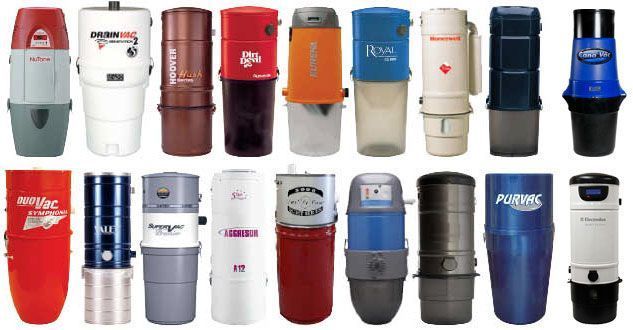
|
|



|

|
What is ABS Resin?
|
|
ABS, also
known as
acrylonitrile-butadiene
styrene,
is a very common type of
Polyethylene/ Polypropylene used to make
light, rigid and durable injection-molded products
for a variety of uses. When used in the
construction of central vacuum
canisters, it is specifically molded to
improve impact resistance, toughness and
most importantly heat resistance. 97%
of all vacuum companies use ABS
injection molding, and 50% of central
vacuum companies have already switched
over to using either full ABS or a
combination of metal and ABS in the past 5 years. Central vacuums with ABS canisters are
made to last a lifetime.
Injection-molded plastic ABS materials
are also used in products like
motorcycle/ bicycle/football helmets,
piping, automotive parts
and even furniture. In
fact, micron-sized
particles of ABS
materials are sometimes
used in ink, which makes
the color appear much more vivid.
Before
any ABS production even starts, all of
the components are put through a series
of rigorous tests and are subjected to
enormous stress and strain that exceeds
typical residential household use. ABS
is globally recognized for it's
durability and longevity and is used in
a large number of products. When applied
to central vacuums, it helps greatly
reduce the decibel level of a unit,
making for a quieter operation. It also
gives you an advantage over metal
because the canister is much lighter, so
taking it down to change a bag or dump
it out becomes much easier. And because
of it's vibration-free construction it's
much less likely to fall or drop down
from the rest of the unit due to
excessive vibration, which would cause
dents in a metal canister. The companies
who have put ABS material to work in
their vacuums have already recognized
the futuristic advantages over metal
designs, and all the benefits using ABS
has to offer. The German engineered Miele Vacuum Cleaner Company, Bosch
Vacuums, and Sebo are some of the finest
household portable vacuums in the world,
and they use ABS material in their
vacuums. Dyson, Hoover, Eureka, Oreck,
Electrolux, Kenmore, Riccar, and
Simplicity all use ABS materials in
their vacuums as well. This isn't your
child's toy material!
|
World famous vacuum companies
use ABS resins, such as Miele,
Electrolux, Oreck,
Hoover, Dyson, Bosch, and so
many more...
|
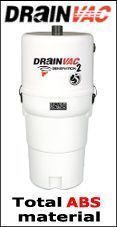
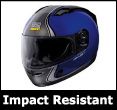
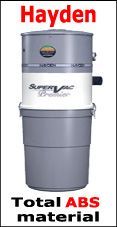
|
|
Compare
Features
|
ABS Vacuums
|
Metal Vacuums
|
|
Dent-Proof
|

|

|
|
Scratch Proof
|

|

|
|
Fingerprint Smudge Proof
|

|

|
|
Rust Proof
|

|
No Comment
|
|
Corrosion Proof
|

|

|
|
Vibration-Free
|

|

|
|
Recyclable, easy
for the environment, better for
landfills
|
Most
ABS
Central Vacuums
|
Some
Metal
Central Vacuums
|
|

|
 Some companies still use 20g metal as a sign of durability and
strength. Metal canisters tend
to be much heavier and more
difficult to deal with. The
vibrations caused by the metal
design will increase the decibel
level and make the vacuum unit
much louder. Metal
constructed central vacuum canisters are
essentially trash cans. They dent and
scratch easily, rust, corrode and gather
fingerprints. Metal
material and paint over metal may start
to chip over time and flake off. Metal is also
susceptible to rust in some
cases, which in time can cause
problems with hinges and
latches. Heavy metal canisters tend
to vibrate quite a bit, and may
also vibrate themselves right
off of the mounting bracket,
falling on the floor and
possibly causing dents and
scratches. Certain
manufacturers use both metal and
ABS materials in combination
with each other to eliminate
some of the weight and for
additional acoustic properties.
Here are two examples of using a
combination of ABS and metal
materials. Beam, the largest
central vacuum manufacturer in
the world, used to make
all-metal Some companies still use 20g metal as a sign of durability and
strength. Metal canisters tend
to be much heavier and more
difficult to deal with. The
vibrations caused by the metal
design will increase the decibel
level and make the vacuum unit
much louder. Metal
constructed central vacuum canisters are
essentially trash cans. They dent and
scratch easily, rust, corrode and gather
fingerprints. Metal
material and paint over metal may start
to chip over time and flake off. Metal is also
susceptible to rust in some
cases, which in time can cause
problems with hinges and
latches. Heavy metal canisters tend
to vibrate quite a bit, and may
also vibrate themselves right
off of the mounting bracket,
falling on the floor and
possibly causing dents and
scratches. Certain
manufacturers use both metal and
ABS materials in combination
with each other to eliminate
some of the weight and for
additional acoustic properties.
Here are two examples of using a
combination of ABS and metal
materials. Beam, the largest
central vacuum manufacturer in
the world, used to make
all-metal
 machines. Now, Beam
understands the importance of an
ABS canister which creates less
weight for the vacuum, helps
handle the vibration better, and
is resistant to cracks and dents
should it fall when being
emptied. AirVac also understands
that using ABS material in
combination with metal is to
their advantage because it
allows them to create a lighter,
more durable canister. Some
other companies that use a
combination of metal and ABS are Cana-Vac, Honeywell, Vacuflo,
Hoover, etc. machines. Now, Beam
understands the importance of an
ABS canister which creates less
weight for the vacuum, helps
handle the vibration better, and
is resistant to cracks and dents
should it fall when being
emptied. AirVac also understands
that using ABS material in
combination with metal is to
their advantage because it
allows them to create a lighter,
more durable canister. Some
other companies that use a
combination of metal and ABS are Cana-Vac, Honeywell, Vacuflo,
Hoover, etc.
|

|
|
|
|
Is the
old metal style central vacuum
canister going away fully? We doubt
it, but with newer technology other
options are available with better
results. In conclusion, there are many
differences between metal and ABS
central vacuum systems, some good and
some bad. Hopefully the information
shown above will help you make a sound
decision on the type of central vacuum
you want to purchase. Although the
canister design of a central vacuum
will not effect it's performance, it
can effect the sound level, hinge or
latch problems, denting etc. A good
rule of thumb is to check the central
vacuum manufacturer's canister
warranty and this will tell you what
to expect. You can find warranty
information and more on our central
vacuum
comparison
chart. For more
information about the difference
between metal and ABS made units, please contact
our team of experts at 1-800-322-2965
for assistance.
|











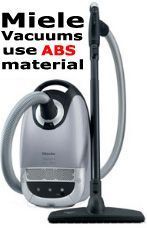
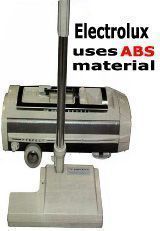
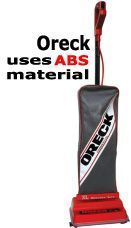
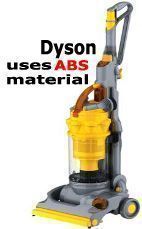




 machines. Now, Beam
understands the importance of an
ABS canister which creates less
weight for the vacuum, helps
handle the vibration better, and
is resistant to cracks and dents
should it fall when being
emptied. AirVac also understands
that using ABS material in
combination with metal is to
their advantage because it
allows them to create a lighter,
more durable canister. Some
other companies that use a
combination of metal and ABS are Cana-Vac, Honeywell, Vacuflo,
Hoover, etc.
machines. Now, Beam
understands the importance of an
ABS canister which creates less
weight for the vacuum, helps
handle the vibration better, and
is resistant to cracks and dents
should it fall when being
emptied. AirVac also understands
that using ABS material in
combination with metal is to
their advantage because it
allows them to create a lighter,
more durable canister. Some
other companies that use a
combination of metal and ABS are Cana-Vac, Honeywell, Vacuflo,
Hoover, etc.

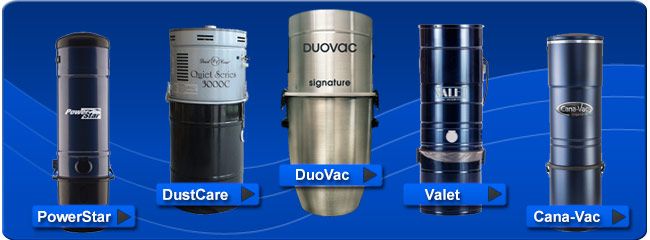

Log In
Create New Account